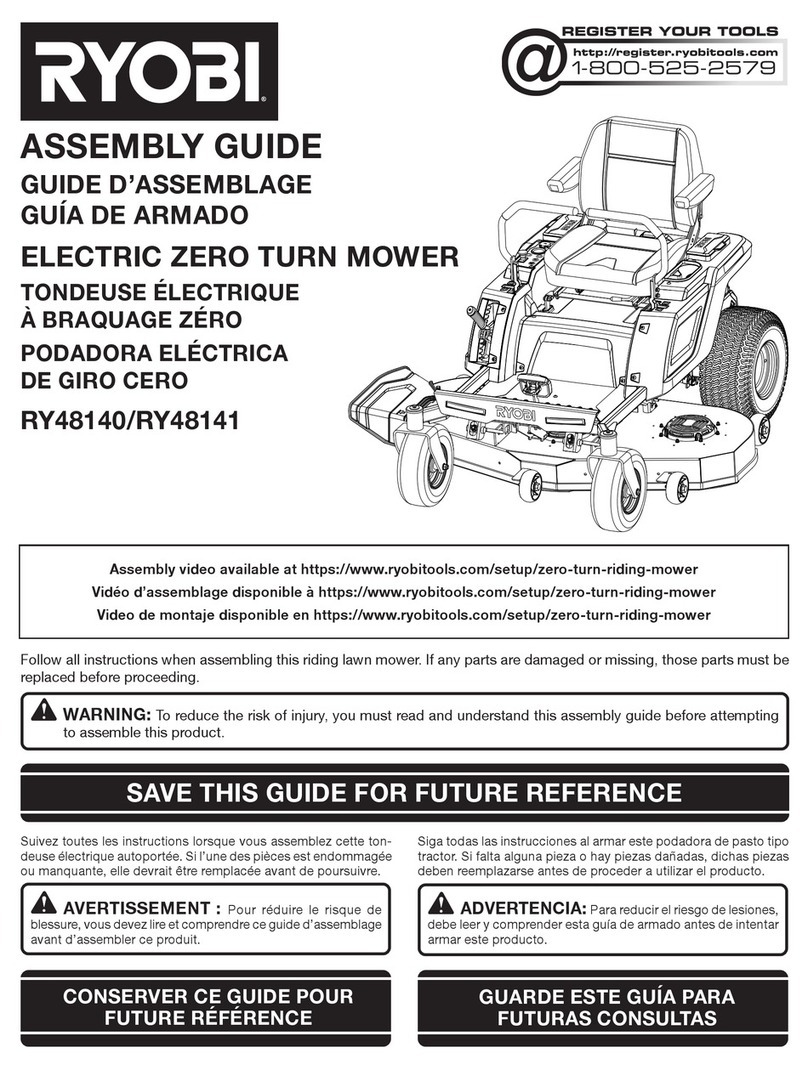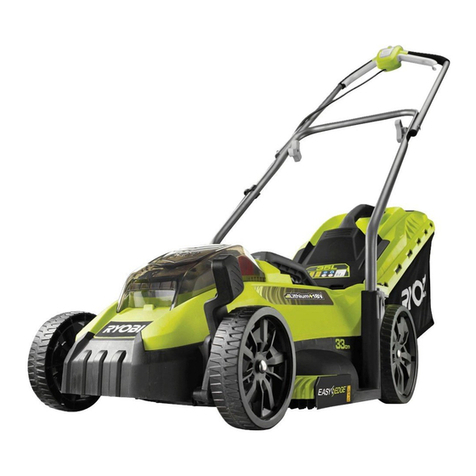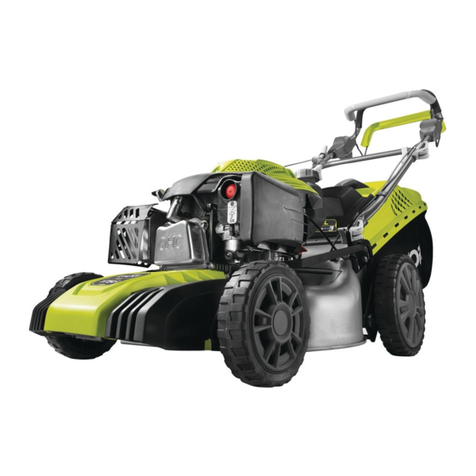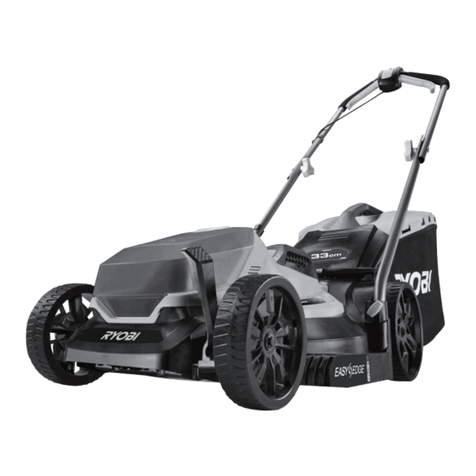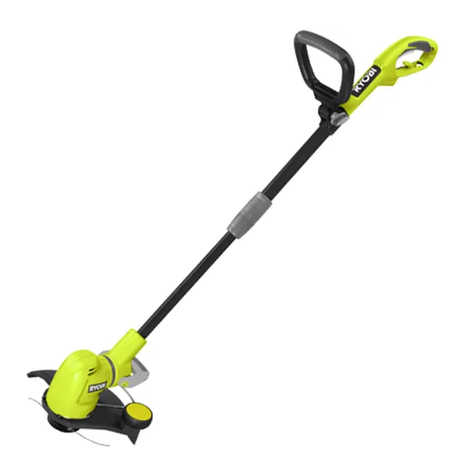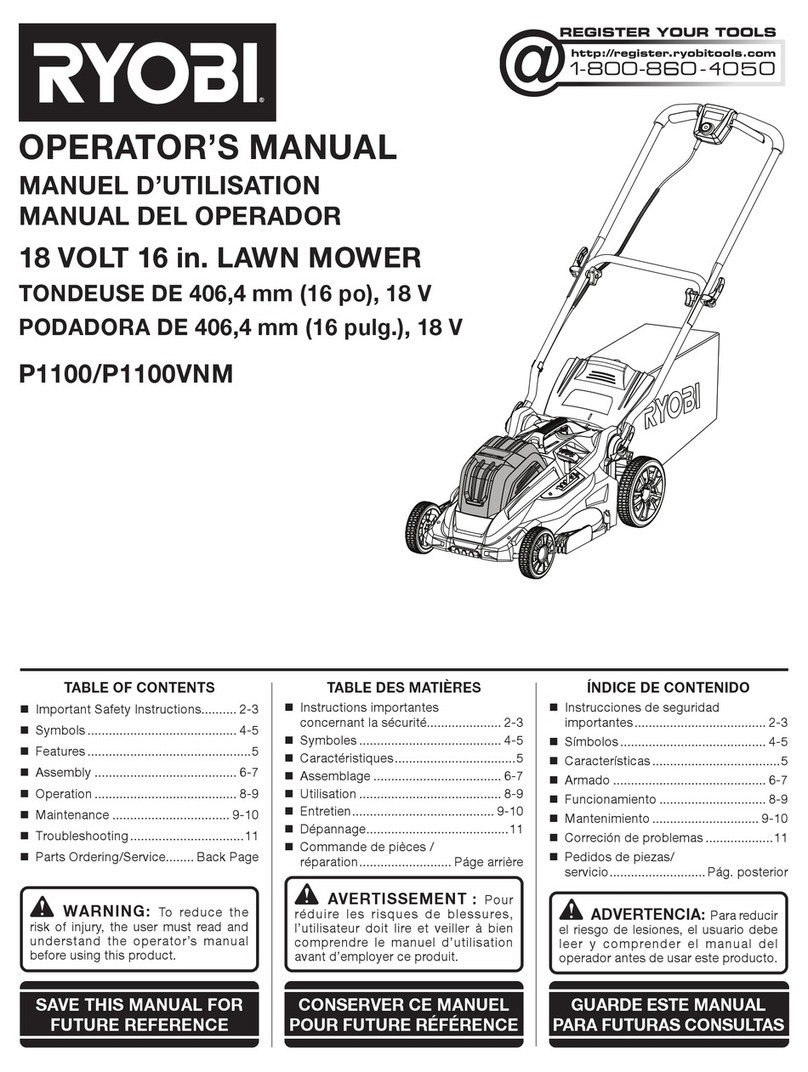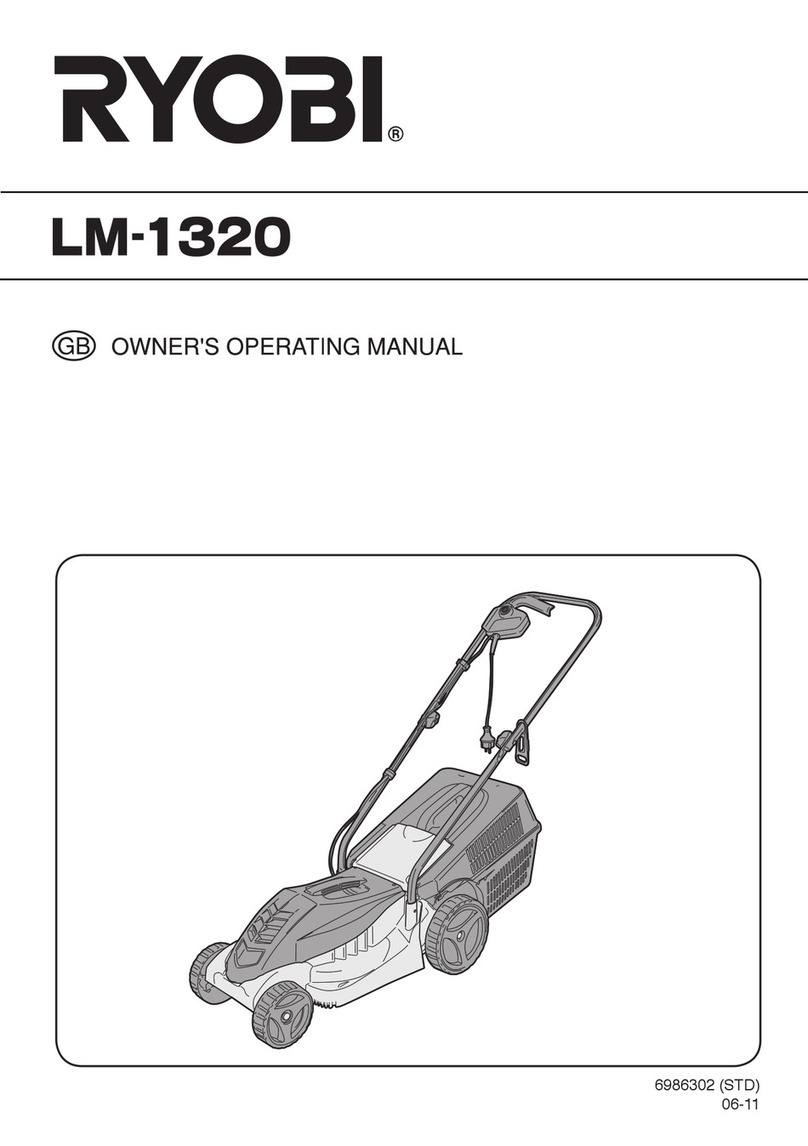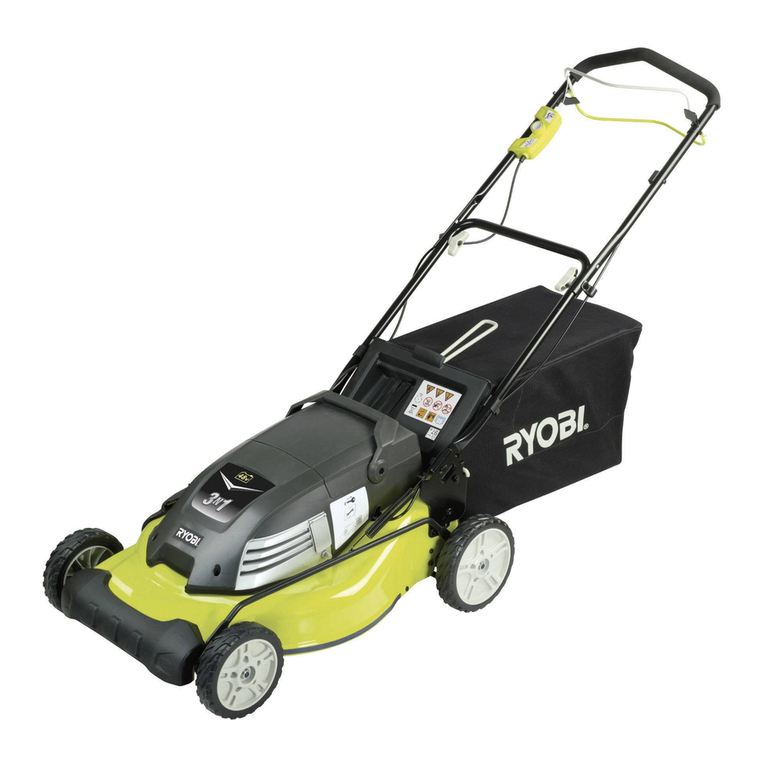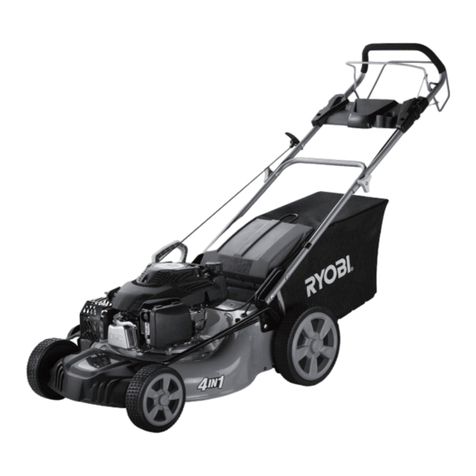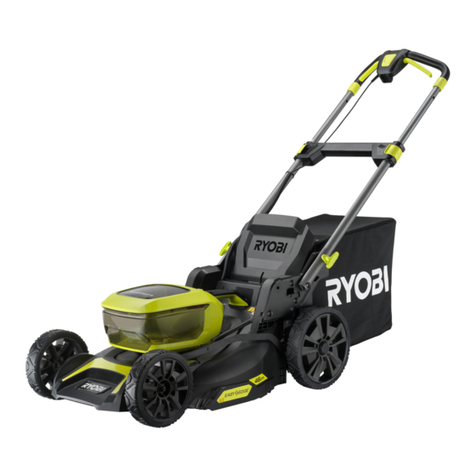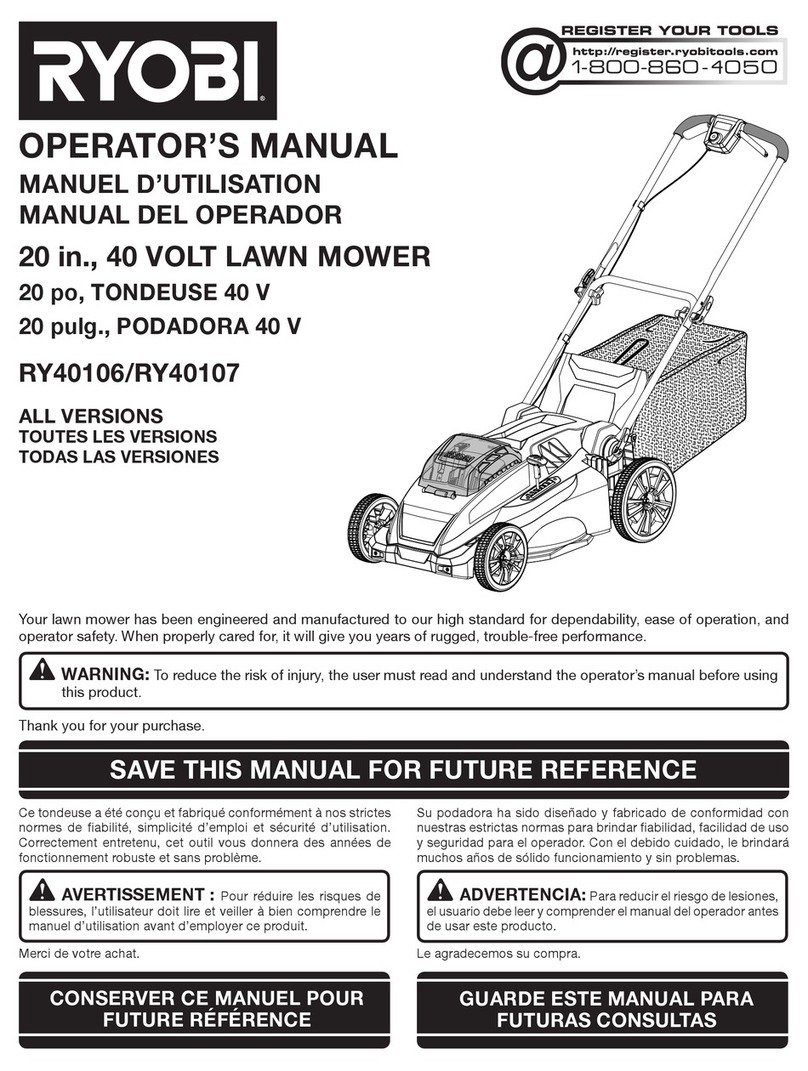
2
■Maintain power tools. Check for misalignment or
binding of moving parts, breakage of parts and any
other condition that may affect the power tool’s
operation. If damaged, have the power tool repaired
before use. Many accidents are caused by poorly
maintained power tools.
■Keep cutting tools sharp and clean. Properly
maintained cutting tools with sharp cutting edges are
less likely to bind and are easier to control.
■Use the power tool, accessories and tool bits, etc.
in accordance with these instructions, taking into
account the working conditions and the work to
be performed. Use of the power tool for operations
different from those intended could result in a
hazardous situation.
■Keep handles and grasping surfaces dry, clean,
and free from oil and grease. Slippery handles and
grasping surfaces do not allow for safe handling and
control of the tool in unexpected situations.
BATTERY TOOL USE AND CARE
■Recharge only with the charger specified by the
manufacturer. A charger that is suitable for one type
of battery pack may create a risk of fire when used with
another battery pack.
■Use power tools only with specifically designated
battery packs. Use of any other battery packs may
create a risk of injury and fire.
■When battery pack is not in use, keep it away from
other metal objects, like paper clips, coins, keys,
nails, screws or other small metal objects, that can
make a connection from one terminal to another.
Shorting the battery terminals together may cause
burns or a fire.
■Under abusive conditions, liquid may be ejected
from the battery; avoid contact. If contact accidentally
occurs, flush with water. If liquid contacts eyes,
additionally seek medical help. Liquid ejected from the
battery may cause irritation or burns.
■Do not use a battery pack or tool that is damaged or
modified. Damaged or modified batteries may exhibit
unpredictable behaviour resulting in fire, explosion or
risk of injury.
■Do not expose a battery pack or tool to fire
or excessive temperature. Exposure to fire or
temperature above 130°C may cause explosion.
■Follow all charging instructions and do not charge
the battery pack or tool outside the temperature
range specified in the instructions. Charging
improperly or at temperatures outside the specified
range may damage the battery and increase the risk
of fire.
SERVICE
■Have your power tool serviced by a qualified repair
person using only identical replacement parts.
This will ensure that the safety of the power tool is
maintained.
■Never service damaged battery packs. Service of
the battery packs should only be performed by the
manufacturer or authorised service providers.
ZERO-TURN MOWER SAFETY WARNINGS
■Before use, always visually inspect the product to
ensure that the blades, blade nuts, and cutter assembly
are not worn or damaged.
■Replace worn or damaged blades and nuts in sets to
preserve balance.
■The blade on the product is sharp. Use extreme caution
and wear heavy-duty gloves when fitting, replacing,
cleaning, or checking bolt security of the blades.
■Contact an authorised service centre to replace
damaged or unreadable labels.
■Check all nuts, bolts, and screws at frequent intervals
for proper tightness to be sure that the product is in safe
working condition.
■Frequently check the bagger kit for wear, holes, or
deterioration.
■The product must be started with the user properly
seated and behind the drive levers. Never start the
product if:
●not all four wheels are on the ground
●the side discharge chute is exposed and is not
protected by the mulch cover
●hands and feet of all persons are not clear of the
cutting enclosure
■Make sure that the lawn is clear of stones, sticks, wires,
toys, tree nuts, tree branches, and other objects that
could damage the mower blades or motor. Do not mow
over property stakes or other metal posts. Such objects
could damage the blade or be accidentally thrown by
the product in any direction and cause serious personal
injury to the operator and others.
■Do not charge the product in the rain or in wet locations.
■Do not force the product. It will do the job better and
safer at the speed for which it was designed.
■Stop the blade when crossing gravelly surfaces to avoid
discharging gravel and rocks. Drive the product slowly
and carefully to avoid loss of control.
■Turn on the motor carefully according to the instructions,
and keep hands and feet away from the blades. Do not
put hands or feet near or under rotating parts.
■Before and while backing up, look behind and down for
small children, bystanders, and pets.
■Never carry children, even when the blades have
stopped. They may fall off and be seriously injured or
interfere with the safe operation of the product. Children
who have been given rides in the past may suddenly
appear in the mowing area for another ride and be run
over or backed over by the product.
■Never leave a running product unattended. Always
stop the blades, engage the parking brake, stop the
motor, and remove the start key before dismounting.
■Check the brakes before each use and during use.
Adjust and service the brakes as required.
■Keep hands and feet away from the cutting area, which
is located under the mower deck and inside the side
discharge chute. Keep clear of the side discharge chute
opening at all times. Do not reach under the mower
deck.
